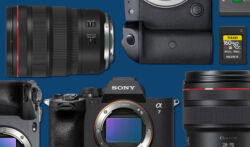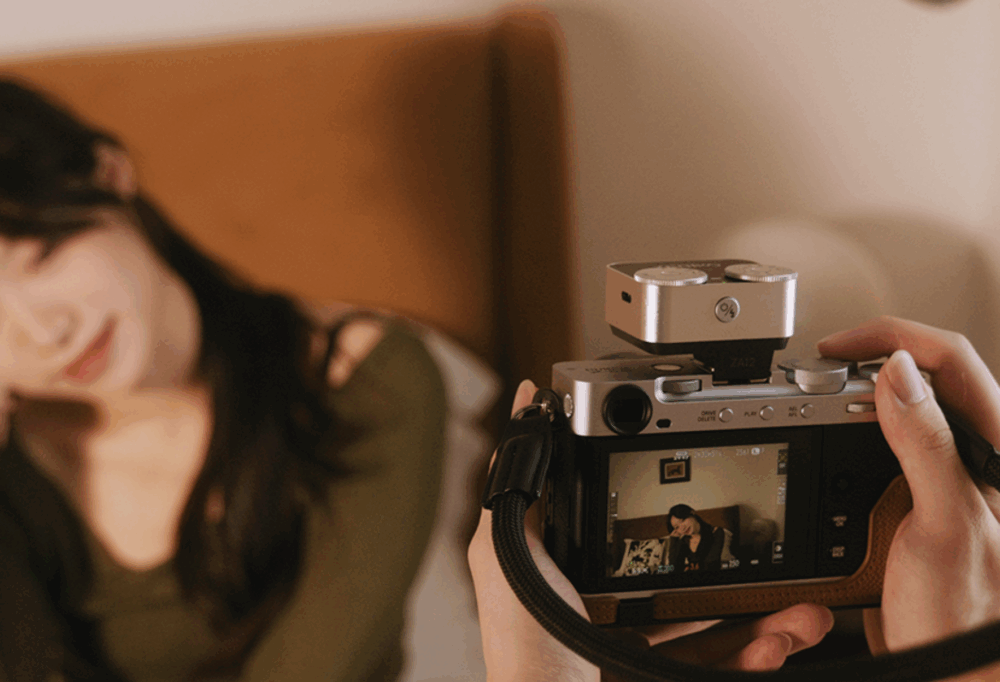Some of Apple’s recent design decisions have gotten heat from the creative and non-creative communities alike. The first strike was the removal of the headphone jack from the latest iPhone, a decision that was labeled as “bold.” In my opinion, the only thing bold about that are the bold marks in the ledger where they will see the sales of wireless Beats headphones (which they own).
[REWIND: Apple Announced New Macbook Pro With Dynamic Touch Bar But Missing A Key Ability ]
Before the wounds were even healed from that debacle, Apple dropped their new Macbook Pro; a decision that was not highly welcomed. The Macbook also followed suit with the “bold” decision to not to include any legacy USB-A ports and the inclusion of a function Bar that was a ‘Touch’ too much.

One argument in particular that stands out is the decision to limit the maximum RAM to 16GB, and has been the subject of huge controversy. In response to the outcry, Phil Schiller, Apple’s senior vice president of worldwide marketing, briefly stated:
To put more than 16GB of fast RAM into a notebook design at this time would require a memory system that consumes much more power and wouldn’t be efficient enough for a notebook.
The new MacBook Pros get around 10-hours of battery life (for the most part). Offering a machine with a 32GB RAM option might compromise the all-important portability aspect of laptop. Other laptops that offer 32GB do so by using desktop RAM (non LP), but this is achieved either by a thicker-form chassis to support the additional battery volume, or, like in the case of other lightweight notebooks, such as Dell’s XPS 15 line, a reduced battery-life. If Apple followed suit, your new Macbook would turn into a small, underpowered iMac with an integrated UPC.
 Arguments can be made that the type of power users who need 32GB RAM mostly use their Macbooks while plugged, so reduced battery life would be an acceptable trade-off, although imagine the backlash against Apple for announcing a new MacBook Pro had a battery life reduced from 10 hours to 4 hours with a 64 GB RAM option. This is because there is no “sleep mode” for underutilized RAM, it is always on, always using power.
Arguments can be made that the type of power users who need 32GB RAM mostly use their Macbooks while plugged, so reduced battery life would be an acceptable trade-off, although imagine the backlash against Apple for announcing a new MacBook Pro had a battery life reduced from 10 hours to 4 hours with a 64 GB RAM option. This is because there is no “sleep mode” for underutilized RAM, it is always on, always using power.
Now I love to Apple-bash as much as the next person, but reduced battery life might not be the only reason for the 16GB limit, it may be the user base. Only a small percentage of users actually need 16GB RAM today, with 32 GB being overkill for most.

Is 16 GB of RAM enough?
For the average user, yes. Running multiple virtual machines, no. Editing photos in Lightroom or editing video in Premiere? Depends. If you are working on either Premiere or Final Cut Pro, 8 to 16 GB of RAM is enough (with 8GB being the recommended amount specified by Adobe), but if you are going to work in Avid Media Composer you need a minimum of 8GB of RAM and at least 24GB if working with UHD.
Memory is a fascinating concept. It provides no performance improvement if you are not memory limited but can provide huge performance improvements if you are, to a point. Most people think that either photo or video editing is a “more” application; the more you throw at it the better it goes: More RAM. More cores. More space. More screen size. What they do not realize is that there is a law of diminishing return. The user will see little to no performance increase between 16GB and 32GB of RAM, and with a difference at most it of 7%. Check out the video From Linus Tech Tips explaining why 16 GB is enough.
Misguided Arguments
For the daily readers of SLR Lounge, you may have read my last piece on Macbook Pro alternatives. Each laptop on the list was carefully chosen to include not only Thunderbolt 3 but a complete lack of stock 32 GB option. All of those converts lusting over the Surface book will be shocked to find that Microsoft doesn’t offer a 32 GB option either.
[RELATED: Microsoft’s New Touchscreen Desktop All-in-One: The Surface Studio | iMac Beater? ]
‘More RAM is better’ is the argument for the uninformed user, as that is a number they can get behind. If you do a quick search of the top-selling laptops on Amazon, Newegg, and B&H, you will only find around 20 options (with variations on the same models) on each that can be bought with 32 GB and 64 GB as a stock option; less than a handful will have the Macbook Pro’s form factor.
[RELATED: Top Windows Alternatives To The New Macbook Pro ]
 The argument for 32 GB of RAM in the new Macbook Pro is a bit misguided for most. The magic limit of 32 GB of RAM will not help your Creative Suite run faster any more than if you had 16. What will help the Creative Suite run faster is a dedicated GPU.
The argument for 32 GB of RAM in the new Macbook Pro is a bit misguided for most. The magic limit of 32 GB of RAM will not help your Creative Suite run faster any more than if you had 16. What will help the Creative Suite run faster is a dedicated GPU.
Mercury Graphics Engine
What is more important, CPU or RAM? CPU. If you have enough RAM to run the program, the CPU will tackle the rendering. Example: Mac Pro Quad 3.7 GHz with 64GB RAM vs. 6 Core 3.5 GHz with 4GB RAM. The 6 core will hysterically outperform the quad core.
[RELATED: Brief Explanation of How Graphics Cards Increase Productivity For Photographers ]
What is more important, CPU or GPU? Both. System RAM does not do the same job as video RAM. While system RAM is used by the processor to temporarily store data that the application knows that it will be using later, video RAM is used as a high-throughput buffer for the GPU on the video card. Like on many low-end computers with an integrated GPU, the system RAM is “shared” as video RAM. All but the 15-inch Macbook Pro have integrated GPUs. From Apple: “Apple computers using Intel Iris Graphics as the primary GPU dynamically allocate up to 1.5 GB of system memory.” MacOS Sierra needs a minimum of 2GB to run, leaving 12.5 GB for other applications
 Editing apps like the Adobe Suite and Final Cut Pro utilize the processing power of a dedicated GPU. As far as using integrated graphics for such applications, you won’t get the same performance from your processor’s core that is dedicated to graphics. The integrated GPU in most cases is just an extra core on your processor that is set aside for processing graphics.
Editing apps like the Adobe Suite and Final Cut Pro utilize the processing power of a dedicated GPU. As far as using integrated graphics for such applications, you won’t get the same performance from your processor’s core that is dedicated to graphics. The integrated GPU in most cases is just an extra core on your processor that is set aside for processing graphics.
In a dedicated video card, like a Nvidia Geforce GTX 1080, the card will have many cores set aside for processing data, as well as several gigabytes RAM on the card itself that are dedicated only to the processing of information. RAM on your video card can be used during the rendering of your videos in order to speed up and increase the accuracy of your renders. MacBooks without a dedicated GPU can struggle even when dealing with 1080p video; no matter what Apple’s marketing says.

Conclusion
Using a laptop is always a series of trade-offs between performance, portability, price, and thermals. There is a reason why most studios have dedicated desktops for tackling a big project; a laptop is a poor choice for handling a hardcore workflow. Most users and creatives using a laptop for media creation will be perfectly fine with 16 GB of RAM.
If workflow requires 32 GB or more of memory and you are constantly being bottlenecked by your current system. Consider moving to move to a dedicated desktop workstation. Closing a few Chrome tabs won’t hurt either.













